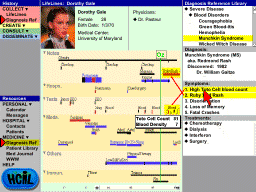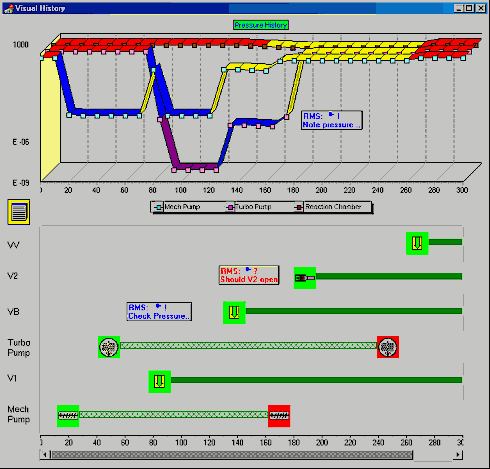Learning Historian
While simulations seem to be useful, we still need to understand how these environments can be designed to effectively promote student learning. The aim of the Learning Historian is to provide a richer environment to learners while they freely explore the behavior of a simulation. The basis of the Learning Historian is to record the history of the interaction with the simulation and allow this history to be replayed for review, sent with a message, used in a tutorial, or replayed as a series of variants to facilitate comparisons and explorations.
Publications and Presentations
Plaisant, C., Rose, A., Rubloff, G., Salter, R., Shneiderman, B. (May 1999)
The Design of History Mechanisms and their Use in Collaborative Educational
Simulations
Proc. of the Computer Support for Collaborative Learning, CSCL' 99, Palo Alto, CA,
348-359.
CS-TR-4027, UMIACS-TR-99-34, ISR-TR-99-74
Chipman, G., Plaisant, C., Gahagan, S., Herrmann, J. W., Hewitt, S., and Reaves, L. (April 2001)
Understanding Manufacturing Systems with a Learning Historian for User-Directed
Experimentation
HCIL-2001-07 , CS-TR-4243 , UMIACS-TR-2001-29
Salter, R. (September 1999)
A Client-Server Architecture for Rich Visual History Interfaces
CS-TR-4056, UMIACS-TR-99-52
Video
Click for Video: Learning histories in simulation based learning environments (24 MB)
Participants
Gene Chipman, Computer Science Graduate StudentCatherine Plaisant, Assistant Research Scientist, Human-Computer Interaction Laboratory
Anne Rose, Faculty Research Assistant, Human-Computer Interaction Laboratory
Gary Rubloff, Director, Institute for Systems Research
Richard Salter, Visiting Scholar, Oberlin College
Ben Shneiderman, Head, Human-Computer Interaction Laboratory
Related Work
Early mockups of learning historian.
See also:
We have also recently started to work with Jeffrey Herrmann to
investigate other applications of the historian.

Genex scenario,
includes demonstration of how learning historian might be used
Transportation project
Simulation
based learning environments
Sponsors and Partners:
This project is sponsored in part by NSF via a NSF-CIRE initiative between ISR
and North Carolina A&T, where Celestine
Ntuen and his student Ben
Okoye have been conducting an evaluation of the simulation modules that will have
historians added to them.


